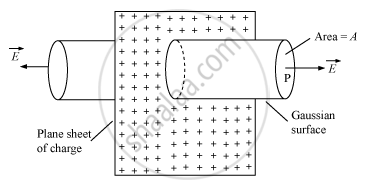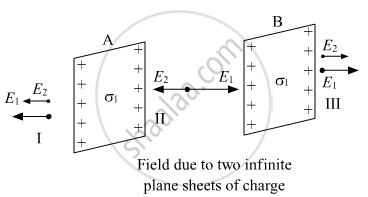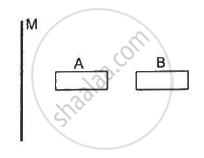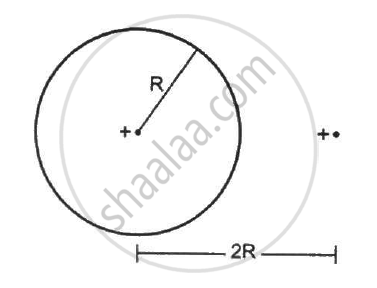Advertisements
Advertisements
प्रश्न
Using Gauss's law in electrostatics, deduce an expression for electric field intensity due to a uniformly charged infinite plane sheet. If another identical sheet is placed parallel to it, show that there is no electric field in the region between the two sheets ?
उत्तर
Electric Field Due to a uniformly charged infinitely large plane thin sheet with surface charge density σ, using Gauss's law

Consider an infinite thin plane sheet of positive charge with a uniform surface charge density σ on both sides of the sheet. Let P be the point at a distance a from the sheet at which the electric field is required. Draw a Gaussian cylinder of area of cross-section A through point P.
The electric flux crossing through the Gaussian surface,
Φ = E × Area of the circular caps of the cylinder
Since electric lines of force are parallel to the curved surface of the cylinder, the flux due to the electric field of the plane sheet of charge passes only through the two circular caps of the cylinder.
Φ = E × 2A … (1)
According to Gauss' Theorem,
`ø q/ε_0`
Here, the charge enclosed by the Gaussian surface,
q = σA
`ø = (σA)/c_0` ...... (2)
From equations (i) and (ii), we get:
`Exx 2A =(σA)/ε_0`
`E = σ/(2ε_0)`
Consider two infinite plane parallel sheets of charge A and B. Let σ1 and σ1 be the uniform surface charge on A and B respectively.

Therefore net electric field (E) between the two sheets can be found out as follows:
\[\text { Electric field due to sheet A }\]
\[ E_1 = \frac{\sigma_1}{2 \epsilon_o} \]
\[\text { Electric field due to sheet B }\]
\[ E_2 = \frac{\sigma_1}{2 \epsilon_o}\]
\[E = E_1 - E_2 \]
\[ = \frac{\sigma_1}{2 \epsilon_o} - \frac{\sigma_1}{2 \epsilon_o} = 0\]
Hence, there is no electric field in the region between the two sheets.
APPEARS IN
संबंधित प्रश्न
Find the electric field intensity due to a uniformly charged spherical shell at a point (ii) inside the shell. Plot the graph of electric field with distance from the centre of the shell.
A point object is placed on the principal axis of a convex spherical surface of radius of curvature R, which separates the two media of refractive indices n1 and n2 (n2 > n1). Draw the ray diagram and deduce the relation between the object distance (u), image distance (v) and the radius of curvature (R) for refraction to take place at the convex spherical surface from rarer to denser medium.
How is the field directed if (i) the sheet is positively charged, (ii) negatively charged?
A charge Q is uniformly distributed on a spherical shell. What is the field at the centre of the shell? If a point charge is brought close to the shell, will the field at the centre change? Does your answer depend on whether the shell is conducting or non-conducting?
A positive point charge Q is brought near an isolated metal cube.
A large non-conducting sheet M is given a uniform charge density. Two uncharged small metal rods A and B are placed near the sheet as shown in the following figure.
(a) M attracts A.
(b) M attracts B.
(c) A attracts B.
(d) B attracts A.

Find the flux of the electric field through a spherical surface of radius R due to a charge of 10−7 C at the centre and another equal charge at a point 2R away from the centre in the following figure.

A circular wire-loop of radius a carries a total charge Q distributed uniformly over its length. A small length dL of the wire is cut off. Find the electric field at the centre due to the remaining wire.
“A uniformly charged conducting spherical shell for the points outside the shell behaves as if the entire charge of the shell is concentrated at its centre”. Show this with the help of a proper diagram and verify this statement.
